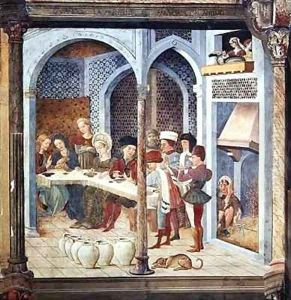Andrea Delitio Paintings
Andrea Delitio, also known as Andrea De Litio or Andrea Da Clautio, was an Italian painter of the late 15th century, primarily associated with the Abruzzo region in Italy. He is considered one of the most significant artists from Abruzzo of that time. While the exact details of his birth and death are not clearly documented, he is believed to have been born around 1450 and to have died around 1505.
Delitio's work is characteristic of the Italian Renaissance, showing a transition from the late Gothic style towards the new aesthetic principles of the Renaissance. His paintings are noted for their use of perspective, detailed landscapes, and a more naturalistic portrayal of figures, which were innovative at the time for the Abruzzo region.
There is not a vast amount of information on Andrea Delitio's life, and much of what is known comes from the analysis of his surviving works and the few historical documents that reference him. It is believed that he was influenced by artists such as Piero della Francesca and Luca Signorelli, which is reflected in his mastery of perspective and the robust, sculptural quality of his figures.
Delitio's works include frescoes and altarpieces, with some of his most notable works found in the Church of San Panfilo in Sulmona and the Church of Santa Maria in Piano in Loreto Aprutino. These works demonstrate his skill in composing complex scenes and his ability to convey spiritual narratives with emotional depth and clarity.
Despite his importance in the context of Abruzzese art of the Renaissance, Andrea Delitio was not as widely known as some of his contemporaries. Nevertheless, modern art historical scholarship has increasingly recognized his contributions to the development of Renaissance art in Italy, especially in the regions far from the major artistic centers of Florence, Rome, and Venice. His works continue to be studied for their artistic merit and for the light they shed on the diffusion of Renaissance styles across Italy.
